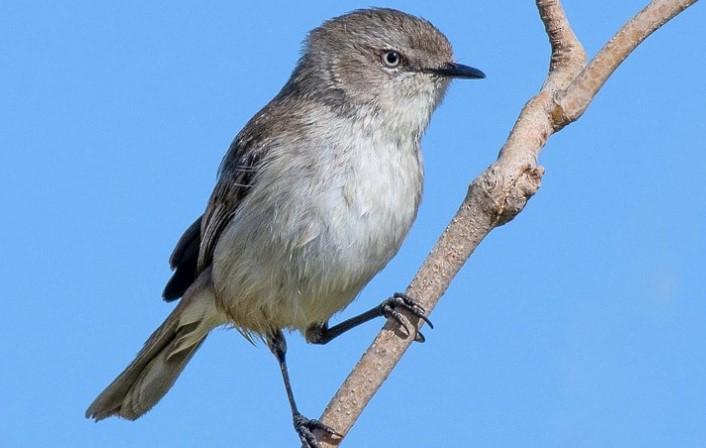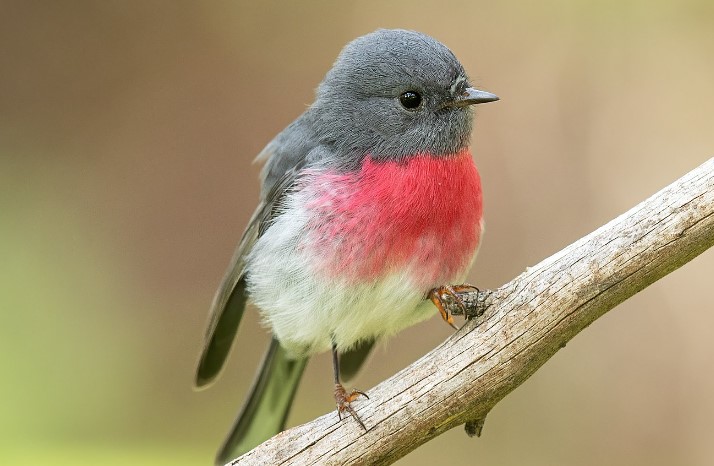Dusky Gerygone (Gerygone tenebrosa) is the largest and least known Australian gerygone. It is limited to mangrove groves and shrubbery. In this habitat, Dusky Gerygones often band together into loose feeding groups of up to four or five which hop vigorously among the foliage picking insects from the leaves. It is also known as Dusky Warbler and Dusky Flyeater.
Dusky Gerygone call is soft, rapidly repeated ticking or chatting in contact when feeding. The Dusky Gerygone song consists of soft, sweet plaintive whistles and descending trills, similar to Large-billed Gerygone but not as jerky or vigorous; both sexes probably sing. The size of Dusky Gerygone is about 110-115 mm in length.

Most feeding is done in the upper branchlets of the mangrove canopy, but occasionally they come to the ground. Where the Dusky Gerygone occurs in the same forests as the Mangrove Gerygone it seems to restrict itself, like the Large-billed Gerygone, to the taller, denser, seaward mangroves, while the Mangrove Gerygone occupies the patchier landward edges. The Dusky Gerygone is sedentary, moving only locally. It is probably similar in its breeding behavior to other gerygones.
As far as identification, both sexes are alike. Head and upper parts mid-grey washed light olive-rufous, particularly on the rump. An indistinct white stripe on either side of the forehead extends back towards the eye, merging with an indistinct white eye-ring in an otherwise plain face. Wings are darker grey-brown. The tail is grey-brown with a dull dusky bar and small faint brown-white spots on the inner tips of outer one or two pairs of feathers. The underparts are grey-white. Eyes are white in color. Bill is black. The feet are black. The immature underparts and sides of the neck were washed pale yellow; eye, and bill brown.

Nesting and breeding seasons occur mainly in September-March. Nest a rather compact, hanging oval dome 200-250 mm long, including a short, thin tail, with side-entrance hood; of strips of bark, closely bound with cobweb; slung among leafy mangrove branchlets, 2-5 meters above ground. Dusky Gerygone lays two eggs, which are perhaps three; matt white spotted with red-brown, particularly at the larger end; oval, about 18 x 12 mm. Dusky Gerygone is found in coastal mangroves from Shark Bay northwards to King Sound-Collier Bay, Western Australia. There are two or three races.
Read More – Everything You Wanted to Know About Brown Gerygone Nest






